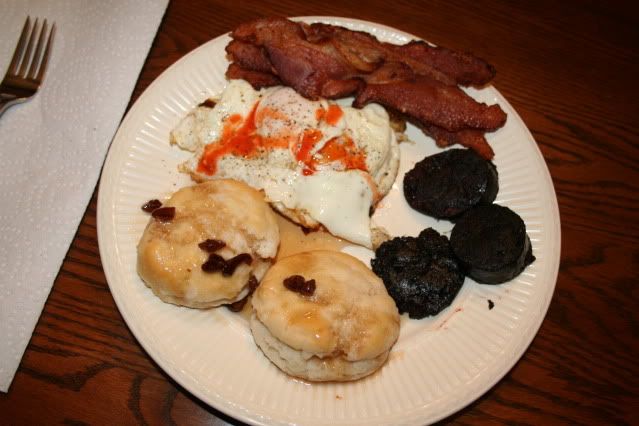Doing it yourself is no difficult job. Important thing to decide up front is whether or not you want to scald and scrape the pig and have a plan in place to keep from having a lot of dead time. If you plan on making sausages out of the whole thing there is no real reason to scrape it and I'd suggest packaging and labeling the meat as you go. You can label the meat as lean, fat, mix 70/30 etc. Then you can freeze it and it will be at the ready when you go to make sausages - oh, and package it in 5 lb increments. If you do it this way you can just skin, clean and chill the package.
However, if you are going to cure hams and such then you will probably want to scald it. This isn't hard but you probably will want another person to help with this mainly to aid in manipulation and movement of the carcass cause I guarantee you the sucker is heavier than you are estimating it is. BTW - if you don't have scales you can measure from the base of his tail to the base of his neck and multiply this by his circumfrance of his chest squared then divide by 400. Ie - (42 x 40 x 40 )/ 400 = 176.4 lbs.. I do it several ways but the last three I've done has been a hispanic style where I don't dip the whole carcass but put it on a table and lay burlap over it then pour scalding water (155-160F) over the burlap. The burlap helps hold the heat and disperce the water better than just pouring it on the skin itself. You don't want the water too hot or it will set the hair. Once you get the knack of doing this removing the hair is just as easy as pulling the skin off your sunburn skin. Essentially you are just putting a first degree burn on it. I use bell scrapers and knives to just pull the hair and first layer of skin off.
Here is the kettle I use along with some pine boughs which help release the hairs.
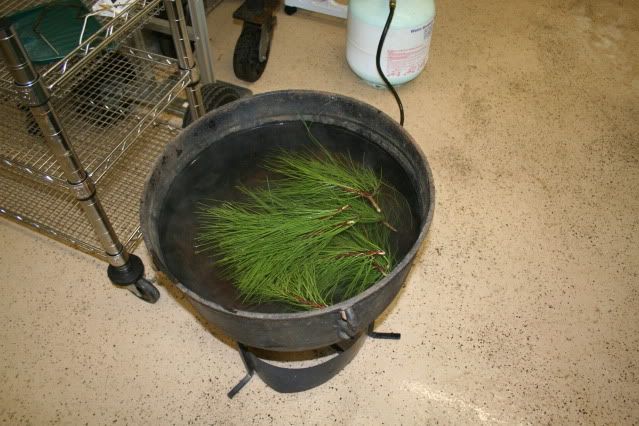
Once this is finished, I take the burlap and make a chock with it and turn the pig on its back using the burlap as a chock to keep the belly up. I then open the gut and disect the insides putting the entrails in three different buckets. The heart, lungs, kidney and caul fat go in one bucket, the intestines in another, and the waste in a third. (BTW - Most hamburger joints will gladly give you their pickle buckets and these are all food grade and of good quality)
After this, I cut the head off and split the carcass with a saw. I have a meat saw but I've used a circular saw (don't suggest) and a sawzall. Once split, put it in the cooler for a night to chill. This is the perfect time to clean up and prepare your brines and things so the next day things will go smoothly.
Here is the outcome.
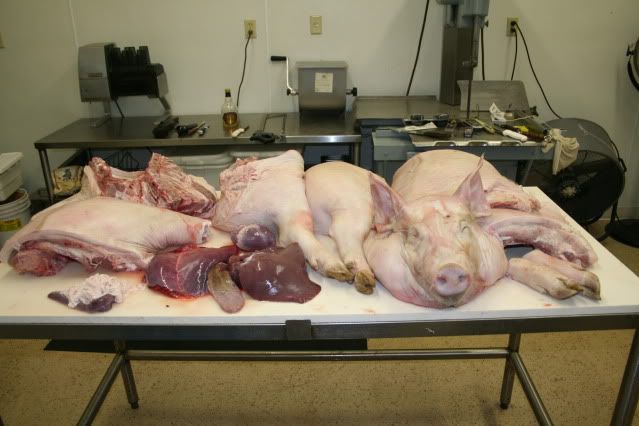
And a few of the pork chops.
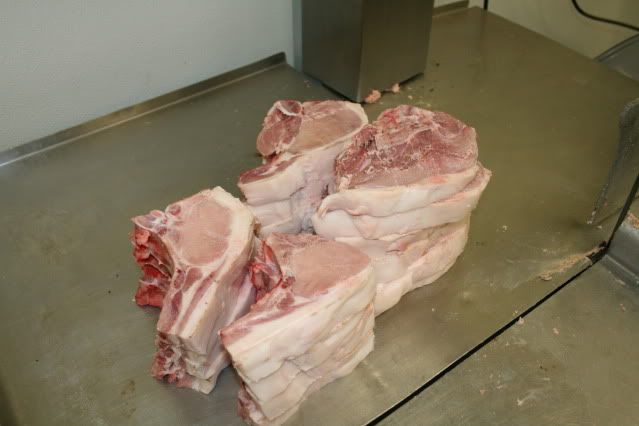
While its not difficult I cannot stress how important it is to have some clear objectives and have a plan and have everything ready. I'd highly recommend getting the brines prepared prior to the actual cut up day. Preferably have them chilling along with the meat itself. This fills in the void times and makes things go so much smoother and you are less apt to make mistakes as you are not rushed for time.
Good luck.
Oh, and be sure to save the blood for the boudin noir.
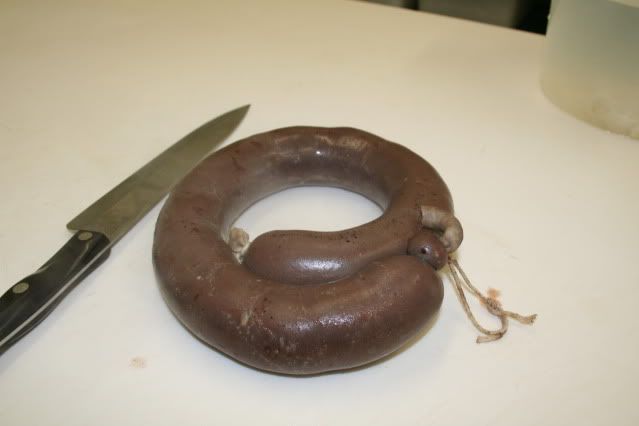
And the final prize. A boudin noir and fresh bacon as part of a home grown breakfast.
